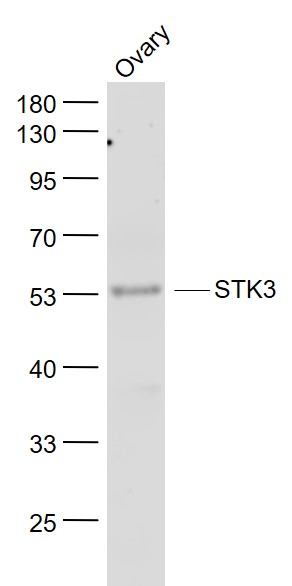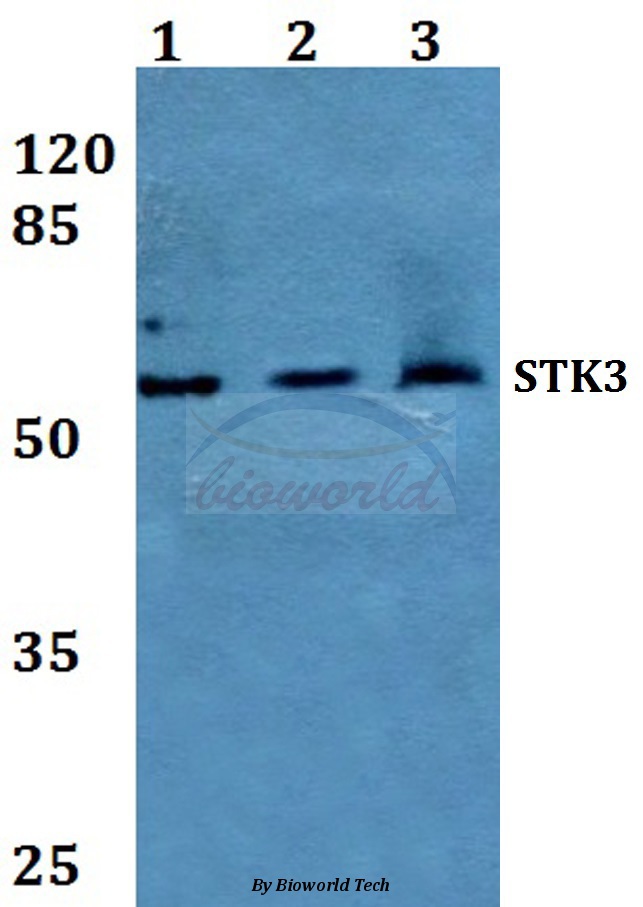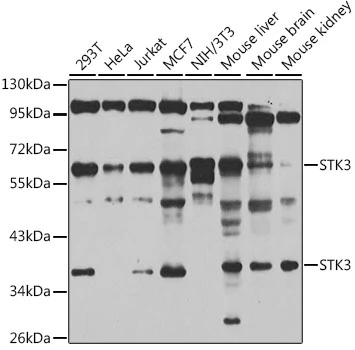STK3 antibody
GTX107417
ApplicationsImmunoFluorescence, Western Blot, ImmunoCytoChemistry, ImmunoHistoChemistry, ImmunoHistoChemistry Paraffin
Product group Antibodies
TargetSTK3
Overview
- SupplierGeneTex
- Product NameSTK3 antibody
- Delivery Days Customer9
- Application Supplier NoteWB: 1:1000-1:10000. ICC/IF: 1:100-1:1000. IHC-P: 1:100-1:1000. *Optimal dilutions/concentrations should be determined by the researcher.Not tested in other applications.
- ApplicationsImmunoFluorescence, Western Blot, ImmunoCytoChemistry, ImmunoHistoChemistry, ImmunoHistoChemistry Paraffin
- CertificationResearch Use Only
- ClonalityPolyclonal
- Concentration0.84 mg/ml
- ConjugateUnconjugated
- Gene ID6788
- Target nameSTK3
- Target descriptionserine/threonine kinase 3
- Target synonymsKRS1, MST2, serine/threonine-protein kinase 3, KB-1458E12.1, MST-2, STE20-like kinase MST2, epididymis secretory sperm binding protein, hippo homolog, mammalian STE20-like protein kinase 2, serine/threonine kinase 3 (STE20 homolog, yeast), serine/threonine kinase 3 (Ste20, yeast homolog), serine/threonine-protein kinase Krs-1
- HostRabbit
- IsotypeIgG
- Protein IDQ13188
- Protein NameSerine/threonine-protein kinase 3
- Scientific DescriptionProtein kinase activation is a frequent response of cells to treatment with growth factors, chemicals, heat shock, or apoptosis-inducing agents. This protein kinase activation presumably allows cells to resist unfavorable environmental conditions. The yeast sterile 20 (Ste20) kinase acts upstream of the mitogen-activated protein kinase (MAPK) cascade that is activated under a variety of stress conditions. MST2 was identified as a kinase that is activated by the proapoptotic agents straurosporine and FAS ligand (MIM 134638) (Taylor et al., 1996 [PubMed 8816758]; Lee et al., 2001 [PubMed 11278283]).[supplied by OMIM]
- Storage Instruction-20°C or -80°C,2°C to 8°C
- UNSPSC12352203





![IHC-P analysis of colon adenocarcinoma tissue using GTX83546 STK3 antibody [4G10]. Antigen retrieval : Heat-induced epitope retrieval by 10mM citrate buffer, pH6.0, 100oC for 10min. Dilution : 1:50](https://www.genetex.com/upload/website/prouct_img/normal/GTX83546/GTX83546_1542_IHC-P_w_23061420_481.webp)
